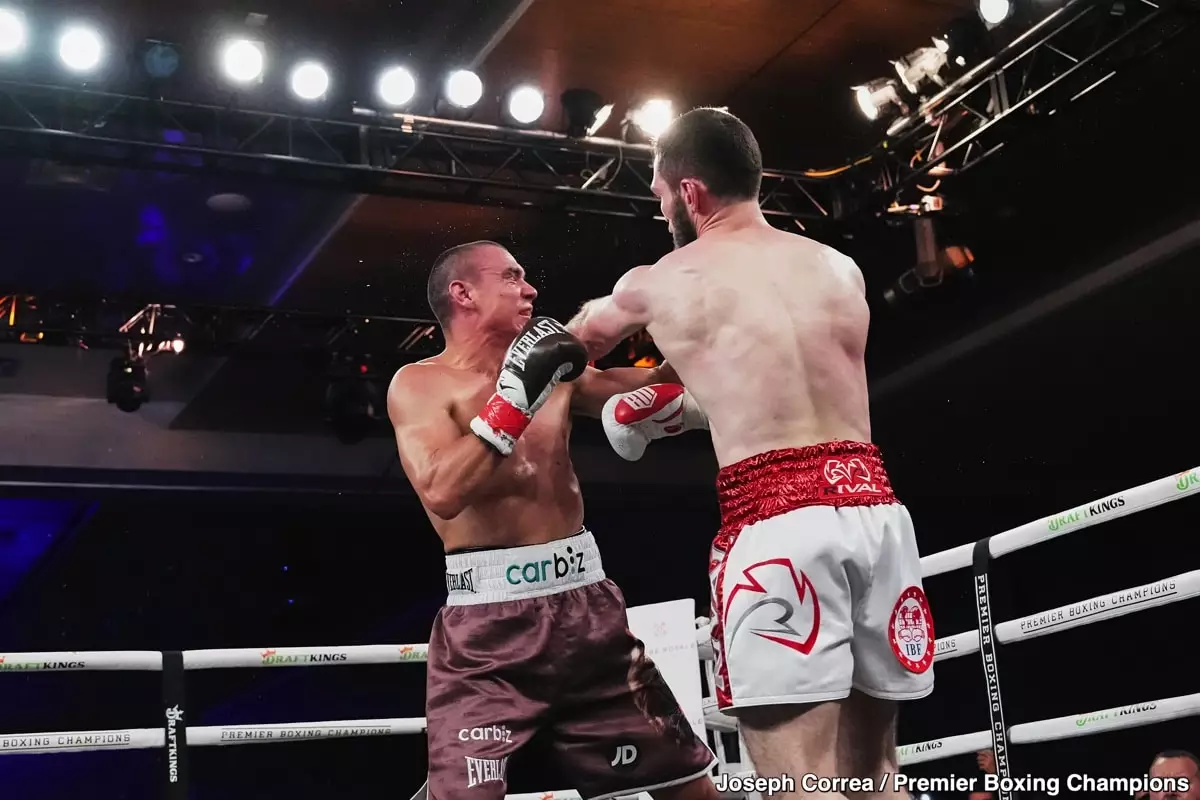In the ever-evolving world of boxing, narratives often shift with the outcomes of fights and the statements from those entrenched in the sport. A recent statement from Steven Nelson, a teammate of Terence Crawford, has stirred discussions about the current state of the junior middleweight division, particularly concerning IBF champion Bakhram Murtazaliev. Nelson’s critique of Murtazaliev’s style and his elevation of former WBA champion Israil Madrimov presents a fascinating perspective that extends beyond just comparisons—suggesting deeper layers of strategy and legacy within the boxing world.
Nelson labels Murtazaliev as having a “basic style,” describing him as tough but not particularly dynamic or unpredictable in the ring. This characterization raises questions about how much weight should be given to the nature of a fighter’s skills versus their effectiveness in securing victories. Murtazaliev’s record of 23 wins, including 17 by knockout, underscores his ability despite the nuances of his boxing style. Winning is inherently a complex mixture of skill, strategy, and grit. Could it be that Murtazaliev’s straightforwardness is precisely what has allowed him to dominate opponents who struggle to engage effectively with this approach?
In juxtaposition, Madrimov’s “herky-jerky” style is portrayed by Nelson as a significant challenge for Crawford. The unpredictability of Madrimov’s movements posed serious issues for Crawford, allowing the much younger fighter to press the former champion to his limits. The contrasting styles between Madrimov and Murtazaliev spotlights a key aspect of boxing—style matters greatly, and a straightforward energy can sometimes secure advantages against fighters who are unprepared or unable to adapt.
While Nelson asserts that Crawford is a “different beast” compared to Murtazaliev, there is an implicit acknowledgment of Crawford’s vulnerabilities. Crawford’s narrow escape against Madrimov suggests that even the most skilled boxers can face challenges that they may not be ready for, hinting at the complexities of fight IQ. His tendency to rely on superior movement and adaptability worked against him when faced with a fighter who presented an entirely different series of challenges than what he had previously encountered.
Fans of Crawford, a fighter with an impressive record of 41 wins and 31 knockouts, are left grappling with the question of whether his skills can compensate for potential shortcomings against Murtazaliev. The boxing community has noted Crawford’s struggles in recent fights, particularly as he ages and perhaps faces the physical toll of years spent in the ring. While Nelson lauds Crawford’s legacy ambitions, there’s a palpable anxiety surrounding the feasibility of those ambitions if he is reluctant to confront certain fighters.
Nelson’s comments also navigate the murky waters of public perception when it comes to Crawford’s reluctance to fight Murtazaliev. Simply put, fans speculating that Crawford is afraid of Murtazaliev may seem radical, yet there is an element of caution that comes with age and experience in boxing. The sport demands not just physical prowess but cerebral strategy, and perhaps Crawford’s hesitance to face Murtazaliev is rooted in understanding the risks involved rather than fear itself.
Crawford has faced a variety of styles throughout his career, but his experience against someone like Murtazaliev—whose relentless pressure and power punches could overtake a fighter’s tactical style—could ultimately embolden more doubts than pride. Hence, thinking of Murtazaliev not just as an opponent but as a formidable stylistic challenge proves critical in understanding the dynamics at play.
In engaging with Nelson’s remarks about legacy, it is worth considering to what extent fighter personnel prioritize their own standing in history compared to public expectations. Nelson argues that Crawford is focused on cementing his spot in the Hall of Fame rather than appeasing fan demands. This perspective emphasizes the notion that competitive athletes often find themselves torn between public pressure and individual legacy decisions, each of which carries its respective weight.
The complexities of this conclusion invite fans to re-evaluate what they deem important in the sport: is it the thrill of fights, the accolades, or perhaps the evolution of boxing as a legacy enterprise? In a world where fighters are scrutinized for their choices, simple wins may not suffice; the manner in which they pursue their careers starts to form a narrative of its own.
In the end, boxing is about many things—style, legacy, and the battles that define careers. As perceptions swirl regarding Crawford, Murtazaliev, and the shifting sands of the junior middleweight division, one thing remains clear: the scrutiny of the ring will remain ever-present, serving both as a litmus test of skill and a reflection of larger narratives about fear, competition, and the relentless quest for greatness.

